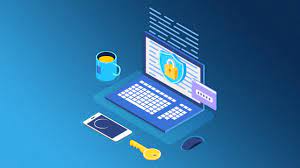As the world becomes increasingly digital, more of our personal information is being stored online. This trend has led to a consistent and corresponding increase in cybercrime, social engineering attacks, etc., as criminals target online accounts for financial gain or identity theft.
Fortunately, you can protect your online accounts and keep your personal information safe. This article will outline several methods for safeguarding your data, from using strong passwords to installing malware protection software.
We will also provide tips on how to react if your account is compromised and how to minimize the damage in such a situation. Follow these guidelines, and you can rest assured that your data is well-protected against cybercrime.
What is a “strong password?”
Everyone seems to talk about strong passwords as the key to online security, but what exactly qualifies as a strong password?
Generally speaking, a strong password is one that is difficult for someone to guess or brute-force. That means it should be long (at least eight characters), include a mix of letters, numbers, and weird symbols, and avoid common words (such as password) or phrases (thisismypassword).
It’s also vital to use completely different passwords for different accounts. If a criminal gains access to one of your passwords, they will likely try using it on other sites in an attempt to compromise those accounts as well. By using unique passwords, you can limit the damage that can be done if one of your passwords is compromised.
How can I create strong passwords?
If you’re having trouble coming up with a strong password, there are a few methods you can use to generate one.
One popular method is to use a passphrase, which is a sentence or phrase that is simple to remember but difficult for someone else to guess. For example, the phrase “I like to eat pizza” could be used to create the password “il2epizza.”
Another method is to use a mnemonic device, which is a memory aid that can help you remember complex information. A common mnemonic device is an acronym, where each letter in the acronym represents a word or concept (such as NASA).
You can use a password manager, which is a software program that stores your passwords in an encrypted format. This way, you only have to remember a single master password to access all of your other accounts.
What is two-factor authentication?
We get it. Two-factor authentication annoys you. You don’t want to have to get a text every time you want to use your Amazon account. Unfortunately for your understandable laziness, 2FA is actually the best way to protect your accounts from being hacked.
Two-factor authentication, or 2FA, is a security measure that requires you to provide two pieces of evidence to verify your identity. The most common form of verification is a code that is sent to your phone via text.
In order to log in, you not only need your password but also need the phone code. This makes it much more problematic for hackers to gain access to your account, even if they have your password.
How do I enable two-factor authentication?
Most major online services, such as Facebook, Google, and Amazon, offer some form of 2FA. You can usually enable it by going to the security settings for your account and looking for the 2FA options.
If you use a password manager, it may also offer 2FA features. For example, LastPass can generate one-time codes that can be used to log in to your account, even if someone has your master password.
What is malware protection?
Malware is any software that is designed to harm your computer or steal your data. Viruses, Trojans, and spyware are all examples of malware. Certain types of malware are particularly difficult to get rid of. They hijack your browser, insert ads into your web pages, and can even encrypt your files and demand a ransom to decrypt them.
That’s why it’s important to have some form of malware protection on your computer. Anti-virus software can detect and remove most forms of malware, and there are also specialized programs that can remove more stubborn infections.
How do I know if I have viruses or malware?
There are a few signs that you may have malware on your computer. If you see a lot of ads, your web browser is acting strangely, or your computer is running slowly, it’s possible that you have malware.
If you think you may have malware, the first step is to scan your computer with an anti-malware program. If that doesn’t find anything, you can try running a virus scan with your anti-virus software.
Finally, if that doesn’t get rid of it, you may have to use a specialized clean-up technique for especially stubborn malware. Look on the internet for instructions on how to do this, as it can be difficult and time-consuming.
Conclusion
Protecting your online accounts is important, but it doesn’t have to be difficult. By following the steps that we outline above, you can keep your accounts are safe as possible.



